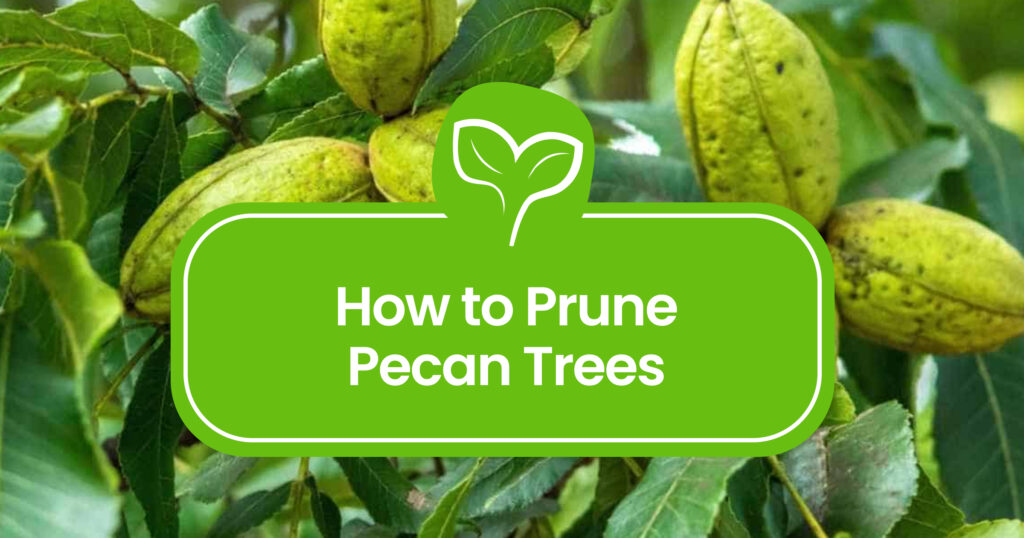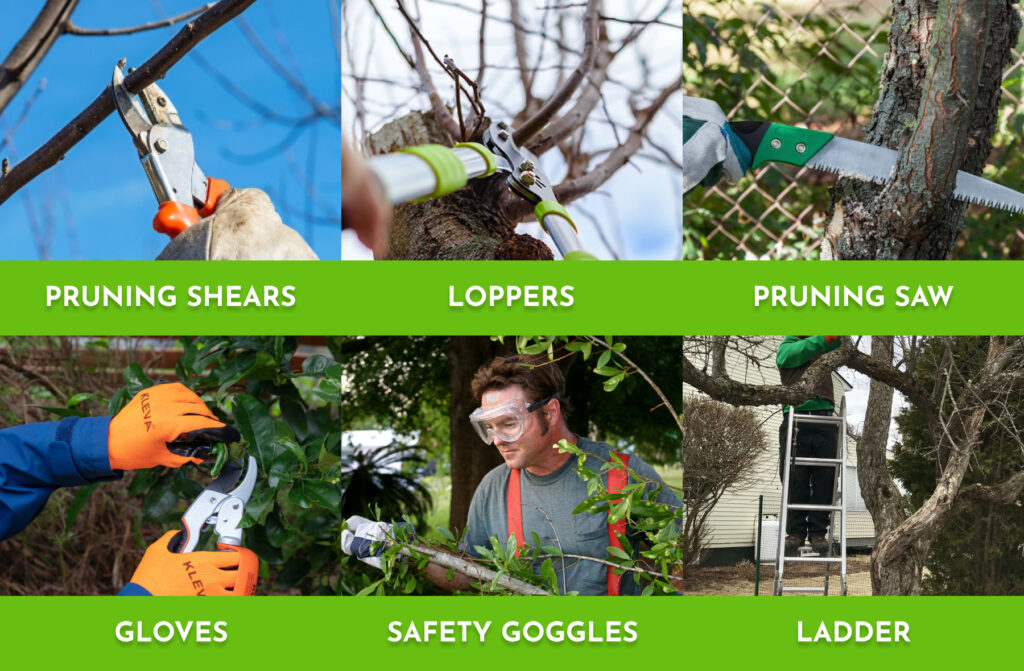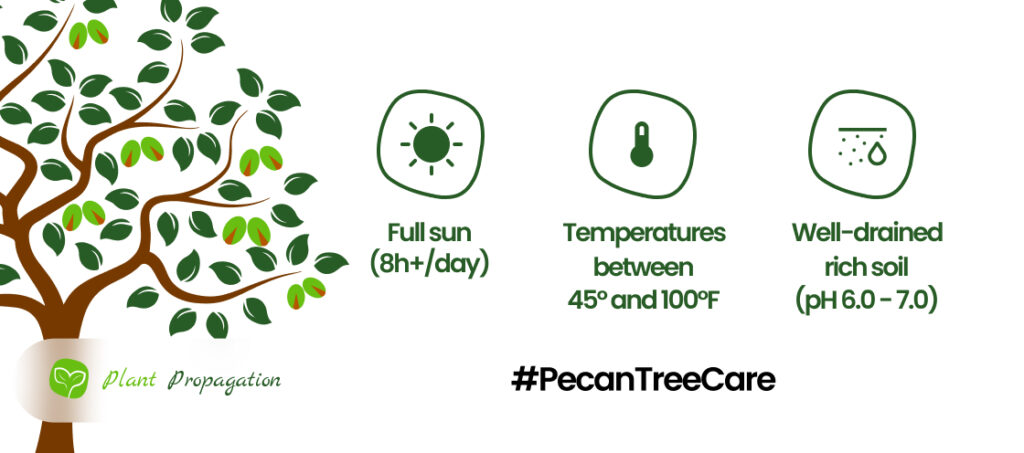
Unlock the secrets to nurturing thriving pecan trees with our comprehensive guide to pruning. In the world of horticulture, pecan trees stand tall as both an ornamental delight and a bountiful source of delectable nuts. Understanding the art of pruning isn’t just about shaping; it’s about fostering robust health and ensuring a generous harvest. From debunking myths to unveiling essential techniques, embark on a journey to discover the nuances of pecan tree care.
Explore the ‘when,’ ‘how,’ and essential tools necessary to sculpt and cultivate these majestic trees for unparalleled vitality and productivity.
Do Pecan Trees Need Pruning at all?
Pruning pecan trees isn’t just beneficial; it’s essential. The benefits are pretty much the same as for most trees, but there are some specific advantages too.
Early pruning during the initial five years sets the stage for robust growth in maturity. Also, regular pruning helps stave off diseases and encourages optimal nut production.
Cutting back the top third of branches after you transplant the tree for the first time might seem drastic but helps sturdy, healthy growth.
Best Time to Prune Pecan Trees
Timing is everything. For pecan trees, the prime time for pruning is during their dormant season, ideally from late winter to early spring. This period ensures minimal stress and maximizes recovery before the active growth phases in spring.
To be fair, you can do some basic pruning all year, but be sure not to over-prune in the growing season. Pecan Trees become more susceptible to pests & diseases (such as Twig Dieback*) when pruning during warmer seasons.

*Twig Dieback (caused by the Botryosphaeria berengeriana fungus): To tackle twig dieback in pecan trees, start by cutting off and getting rid of the affected dead branches. Then, figure out what’s stressing the tree—like too many nuts, diseases, lack of water, or too much shade—and fix it. Doing this helps stop more branches from dying and keeps your tree healthier.
The Tools You’ll Need
To prune your Pecan Tree, you won’t need a lumberyard, just a few very basic tools:
- Pruning Shears: For smaller branches and precise cuts.
- Loppers: Ideal for thicker branches within reach.
- Hand Saw or Chainsaw: For larger branches or those hard-to-reach spots.
- Protective Gear: Don’t forget gloves, and eye protection, if dealing with sizable branches.
- Ladder: For larger Pecans, you’ll probably need a ladder to reach those higher branches.

How to Prune Pecan Trees Step-by-Step
Central Leader Pruning Step-by-Step
This method about identifying and preserving a central, dominant trunk while removing competing leaders. It’s the backbone of pecan tree pruning.
- Pick a Strong Trunk: Start strong by choosing a sturdy central trunk—think of it as the tree’s backbone. Storms and wild weather won’t ruffle its feathers then! This helps create a tree with well-spaced and wide-reaching branches, making it tough against winds and storms.
- Trim the Top Third: Keep things in check by regularly snipping off about a third of the top trunk. This keeps the buds spaced out and prevents what’s called “witch’s broom,” where buds bunch up too close together. When spring hits, this helps branches spread wider, soaking up more sunlight and water.
- Choose the Right Branches: Think strategically about which lower branches to trim. Mark the ones you want to keep using pegs, then prune away the rest. It’s like giving the central trunk some breathing room, without any competition from lower branches. Just let the base growth stay unless it’s shooting straight up.
- Give Wounds Some TLC: After pruning, if the tree’s actively growing, it might leak a bit more, but that’s okay—it won’t hurt. To help the tree heal faster, slap some white paint on the cut parts facing the sun. It’s like sunscreen for the tree’s wounds, keeping them cool and aiding quicker healing. But don’t use any other stuff on those cuts!
Pruning Pecan Trees Step-by-Step
- Optimal Growth Design: Mold your pecan tree’s growth for optimal performance—let those upper branches stretch wide to absorb ample sunlight. Focus on significant upper branch pruning in the initial 10 to 15 years, setting the stage for a prolific yield.
- Singular Strength: Nurture a singular, robust trunk as the foundation for quality growth. Sculpt it into preferred shapes like the classic ‘vase’ form, where the main trunk divides into three. Patience is key; stick to your design plan for lasting results.
- Strategic Lower Pruning: Trim lower branches for convenient access just above head height. Maintain a clear space for essential tree care activities—watering, fertilizing, and pecan gathering. Create room for orchard management machinery by shaping trees uniformly during pruning.
- Eliminating Deadwood: Identify and remove dead upper branches promptly, preventing further damage from wind, frost, or neglect. Utilize tree saws and loppers for precise removal, ensuring a healthier tree and thwarting potential issues.
Aftercare
After completing the pruning process, cleaning all tools, and removing pruned branches, there are a few more steps you can take to aid in your Pecan tree’s faster recovery. Mulch around the base, water adequately, and keep an eye out for pests or diseases. Regular checks post-pruning will ensure your tree bounces back beautifully.

Frequently Asked Questions
What is the best time to prune a pecan tree?
The prime time to prune pecan trees is during dormancy, typically in late winter or early spring. However, pruning can be done at any time without harm. Pruning during active growth may result in more sap flow, but it’s not damaging. To aid healing, apply white latex paint on cuts facing the afternoon sun. Otherwise, avoid using sealers on the wounds for optimal healing.
How do you hedge a pecan tree?
Hedging a pecan tree typically follows two common patterns: mechanically hedging alternate middles or hedging every 4th row in the orchard. With alternate middle hedging, trees along every other row are mechanically hedged, removing growth along one side of the trees in each row’s middle. The other method involves trimming every 4th row in the orchard.
Can you cut down pecan trees in Texas?
In Texas, cutting down pecan trees might require a permit, especially if an arborist deems it necessary for removal. Specific situations, like the tree being dead, dying, diseased, or posing a hazard to property or people, may warrant its removal. To be safe, just get a permit!
How often should pecan trees be pruned?
Pecan trees benefit from annual pruning, preventing the need for extensive pruning at once. Pecan trees have heavy and light production years alternately, suggesting a lighter pruning touch in ‘on’ years and more substantial attention in ‘off’ years.
Can improper pruning harm pecan tree health?
If you prune your Pecan tree too much in the wrong season (growing season), your tree will become more susceptible to diseases. The same goes for blunt and dirty pruning tools. Anything you are cutting with should be cleaned and sharpened to avoid hurting the tree.

